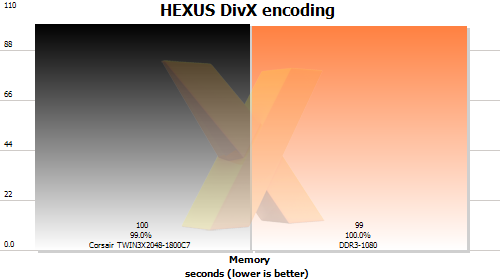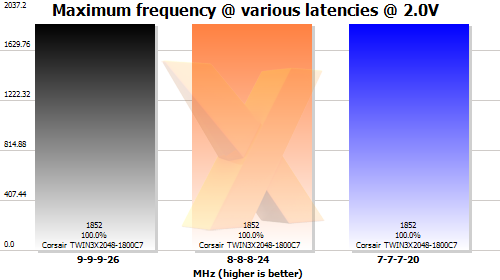DivX, gaming, overclocking, temperatures.

Our DivX encoding test seems counter-intuitive at first glance. The benchmark has a greater reliance on streaming data than on multiple random accesses, such that DDR3-1800 has no real benefit over slower RAM.


Gaming, though, often requires quick access to system memory and benefits as a result. Of course, subsystem speed won't count for much if you're playing at a setting that's primarily GPU-limited.
Overclocking
We manually relaxed the latencies and raised the bus speed - and consequently the memory speed - to see just how much higher the modules could go. Memory voltage was left at the specified 2.0V.
Now, the interpretation of the above graph tells us that we're hitting a subsystem ceiling at 1852MHz. That's generally proven by the fact that relaxing latencies, which should allow the RAM to inch higher, has no effect, with or without the Airflow fan. Again, thinking of the P35 chipset and its limited ratios, you need to ensure that CPU- and chipset-related factors don't impinge upon potential overclocks, as they do here.
Temps
We ran the modules through a 30-minute stability test with and without the Airflow cooling. The modules were run at their rated speeds and voltage. We added a 92mm chassis fan that was aimed at the motherboard's northbridge and heatpipe cooling. Further, the CPU cooler was upgraded from the our reference heatsink, the Akasa AK-961, to an Akasa AK-965. Ambient temperature was noted to be 23°C.Running with the Airflow fan resulted in a load temperature of just 27°C; 4°C above ambient. Removing the Airflow-assisted cooling (ambient had dropped to 22°C) resulted in a load temperature of 36°C. Both figures are indicate that Corsair's DHX cooling does its job well.









